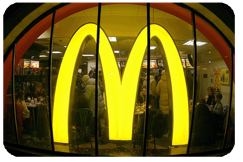 By the end of the year, mobile advertising spending will eclipse the amount of money that companies spend on old media like radio and newspapers. This historic shift shows just how far smartphones and tablets have come after less than a decade of existence. In contrast, newspapers have been in circulation for centuries while radio has been a media fixture for nearly 100 years.
By the end of the year, mobile advertising spending will eclipse the amount of money that companies spend on old media like radio and newspapers. This historic shift shows just how far smartphones and tablets have come after less than a decade of existence. In contrast, newspapers have been in circulation for centuries while radio has been a media fixture for nearly 100 years.
Analysts estimate that companies will invest nearly $18 billion in mobile ads this year while newspapers Continue reading








